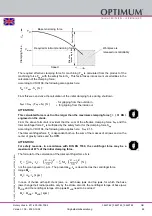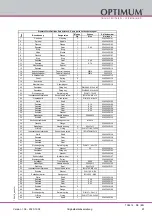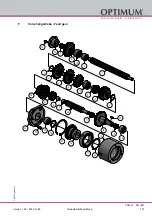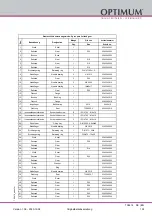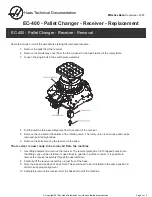
Rotary chuck - K11-200 ISO 702-2
Version 1.0.5 - 2020-12-09
91
Originalbetriebsanleitung
3442762
│
3442763
│
3442764
GB
K11-
200_I
SO
-702
-2_3
4427
62_3
44276
3_43
3276
4_GB
.f
m
1 set of external clamping jaws, centric clamping
1 clamping key without ejector
1 Operating manual
7.10
Assembly
7.11
Assembly of the manual chuck
7.11.1 Handling before mounting
Actuate the chuck before assembly on the lathe. Turn the spindle to the left by means of the
clamping key until it stops.
The numbered jaws have to be pushed into the correspondingly numbered guidance (jaw 1 into
guidance 1 etc.)
Finally turn the spindle several times to the right and to the left until it bottoms out.
7.11.2 Preparing the chuck attachment
Check the head of the machine spindle or the ready-machined intermediate flange on true-run-
ning and face play. The contact face has to be chamfered and clean at the bores. Remove pos-
sible damages at the mounting faces of the spindle head. In case of flange spindles, the contact
face has to be checked with a straight edge. For fastening with an intermediate flange please
note that the flange needs full contact with the chuck body. The flange must be supported by
the whole face.
7.11.3 Mounting of the manual chuck
Thoroughly clean the centering and the bearing surfaces of both parts and lubrify them with oil
before placing the chuck onto the spindle head. When the chuck is slightly pressed, there
should be a noticeable play and between the faces there should be a gap of max. 0.02 mm
(feeler gauge).
7.12
Lubricating and cleaning the lathe chuck
ATTENTION!
Do not use compressed air to remove dust and foreign substances from the lathe chuck.
Coolant squirts on the lathe chuck and removes the grease from the master jaws. In order to
maintain the tensioning force and the long-term accuracy of the lathe chuck, the lathe chuck
must be lubricated regularly. Insufficient lubrication will result in malfunctions at reduced ten-
sioning force, which affects the accuracy and causes excessive wear and seizing.
Depending on the chuck type and operating state, the tensioning force of a lathe chuck can
decrease by up to 50 percent of the nominal tensioning force.
A presumably securely clamped workpiece can then fall out of the chuck during processing.
Oil the chuck regularly at the oiler. Use additional an lubricant on the toothing of the clamping
jaws, which is of high quality and for high pressure bearing surfaces. The lubricant should with-
stand the coolant and other chemicals.













